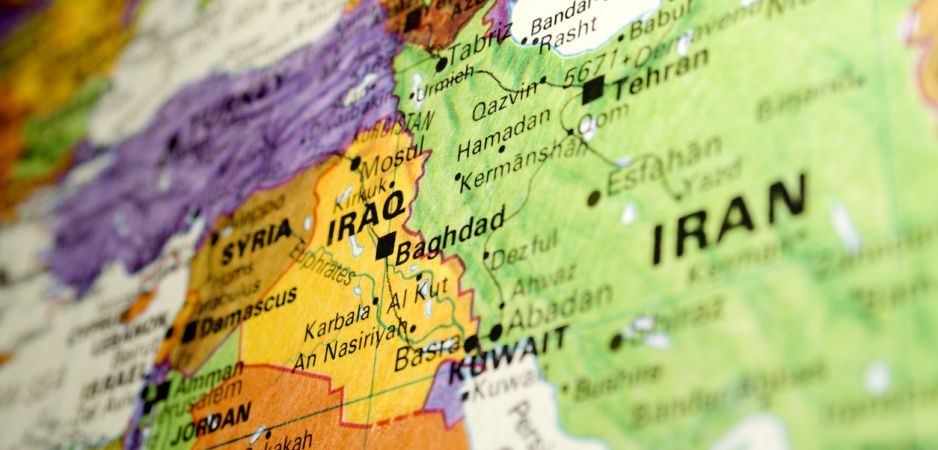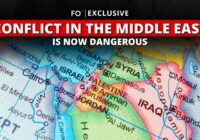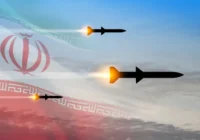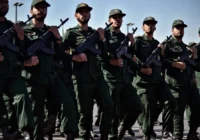For the US to understand the changing power dynamics in the Middle East, Iran’s historical arc and its guidance of Shia fundamentalism need to be understood.
Since the election of Michel Aoun as president on November 1, a two-year political stalemate in Lebanon has concluded. His election marks the culmination of a strategic effort that began over 10 years ago, when out of the rubble of the Syrian withdrawal emerged a pragmatic alliance between Aoun’s nascent Free Patriotic Movement and Hezbollah. The marriage between the Maronite Aounists and Shia Hezbollah was a shrewd move of political convenience, calculated to circumvent the rise of the Western- and Saudi-backed Saad Hariri and his March 14 Alliance.
But it was also a part of grand Iranian strategy. Aoun’s rise to the presidency is the latest in a series of master chess moves calculated to solidify Hezbollah’s control over Lebanon and, more broadly, to strengthen Shia Islamist power.
While Hezbollah—the Middle East’s most powerful popular Shia movement—secures hard-won political power through the gaming of the Lebanese political system, its nearest Sunni counterpart, Daesh (Islamic State), is on the cusp of defeat at the hands of Iraqi and Kurdish forces, following several years of incompetent and barbarous millenarian governance in the areas under its control. All the while, policies from Sunni powers in the Gulf Cooperation Council (GCC) and Turkey have fanned the flames of nihilistic takfirism and inter-Sunni ethnic warfare.
Sunni and Shia Islam
It is legitimate to ask how the militant variants of Sunni and Shia Islam have become so divergent.
Although a granular analysis of Islamic hierology would be fascinating (and endless), suffice to say that the codified theological authority of Shiism allows for a more rigid adherence to clerical dictates. A significant effect of this structure has also been a religious leadership that is considerably better educated and qualified than its Sunni counterparts. For example, Osama bin Laden, who was an engineer with no religious qualifications to speak of, became a spiritual leader of militant Sunnis. Yet a similarly unqualified figure materializing in Shiism is almost unthinkable. Indeed, while Hezbollah Secretary General Hassan Nasrallah has received extensive theological education in both Lebanon and Najaf, on all major questions he has deferred to maraji such as the late Mohammed Hussein Fadlallah, as well as to ayatollahs in Iran.
But the application of theological tenants does not occur in a vacuum. Identities—local, tribal, cultural and national—contribute, as does the broad sweep of history.
For the Shias, nothing has contributed more to their modern identity—or to the nature of their militancy—than Iran. Since the time of the Safavids, Iranian Shiism has been the most powerful force guiding the sect. Given Shia hierarchical authority, this has resulted in a “Persianization” of Shiism, with Iranian clerics saturating Shia mosques, as well as the watering down of ethnic divides between Arabs and Persians through marriage and cohabitation, particularly in neighboring Iraq.
Despite theological debates among maraji, with highly influential ayatollahs such as Iraq’s Ali al-Sistani not wholly subscribing to Ruhollah Khomeini’s Wilayat al-Faqih, the sanctity of the authority has prohibited inter-sectarian conflict of any significant kind. This is in stark contrast to inter-Salafist violence prevalent in Syria and Iraq, or the Salafist targeting of other Sunni sub-sects (Sufis) and theocracies (Saudi Arabia).
Persian Nationalism
A crucial byproduct of Iran’s de facto custody of Shiism has been the cross-pollination of Shiism and Persian nationalism. Iranians are conscious that they are inheritors of a grand history of Persian greatness. Iran’s status as the preeminent purveyor of Shia theological currents (Najaf and Karbala notwithstanding) has rendered its strategic guidance the virtual command authority for the Middle East’s vast Shia communities. With the unitary nature of Iran’s clerical-governmental leadership, the centuries-ingrained Persian chauvinism tends to inflect the strategic expressions of Iranian religious thought. No marja or ayatollah has directly questioned Iran’s religious legitimacy, as Sunni extremist leaders routinely do of Saudi Arabia.
Iranian leadership, although highly religious in nature, is pragmatic, pursuing regional hegemony with Shiism as its vehicle. Nationalism, anti-colonialism and anti-imperialism have come to define Shia fundamentalism, a result of the “red Shiism” of Ali Shariati and the radical left’s influence on Khomeini and other anti-Shah thinkers during the 1960s and 1970s. Iran’s grand strategy, in fact, has more in common with Bolshevism than with Sunni takfirism. From its alliances with the communist (that is to say atheist) Tudeh Party during the Iranian Revolution, to its empowerment of the region’s 30 million Sunni Kurds (which it has been doing since the early 1980s), to Hezbollah’s alliance with the Christian Aounists, the militant Shia movement has proven to be pragmatic and strategically talented.
The Sunni jihadist movement, conversely, busies itself with internecine conflict (see Daesh versus Jabhat al-Nusra for but one salient example) and draconian massacres of civilian populations. The Iranian leadership, meanwhile, has formed a kind of Shia Comintern (admittedly, not so clearly organized) comprising allied militant groups across the Muslim world and beyond.
Although Iran is full of many liturgical illogicalities typical of a theocratic administration, when it matters, the Islamic Republic has proven time and time again, as have its prized proxies, that discipline and strategic foresight, not irrational fanaticism, rule the day. One only needs to drive through Hezbollah neighborhoods in Beirut to understand that it is not exactly Daesh-controlled Raqqa.
Quds Force
Iran’s military professionalism illuminates the point. Throughout the Middle East, the Iranian Revolutionary Guard Corps’ (IRGC) Quds Force is the only strategic military organization, beside US Army Special Forces, conducting long-term force multiplication among local guerrilla fighters of any significant size and scope. In addition to Quds Force operatives, Iran has even deployed regular army commandos to the fighting, a risky commitment its Sunni state rivals lack. The military alliance of Iran, Russia, the Assad government, Hezbollah and Iraq’s myriad Shia militias has proven strategically decisive in Syria.
The Sunni powers, because of a lack of unity both with each other and with their militant sub-state coreligionists, have no discernable strategy in place in Syria, Iraq or Yemen.
Ultimately, it is the purity—the life-or-death importance of ideological details—that prevents the extended Salafi-Wahhabi-Takfiri community from challenging Shia geostrategy and organization. In many ways, the Shia militant movement is simply Iranian imperial nationalism under the guise of Islam. It is the preeminence of this pursuit of hegemony that has allowed it to compromise the most irrational (if doctrinally accurate) elements of fundamentalism—namely, inter-religious alliances with Sunnis, Christians and, covertly at least, Jews. This is because Shia fundamentalism is based primarily on the idea of resistance, not extreme literal adherence to the Quran. Hence the deep, decades-old ties between Lebanese Christians and Shias, which has culminated in Aoun’s (and Hezbollah’s) victory.
 Inside the Washington beltway, imprecise and generic umbrella terms such as “radical Islamic terrorism” and “jihadist” are routinely employed to refer to a complex, multifarious, and distinct milieu of often-militant political forces that exist from Africa across the Middle East to South Asia. More mundanely, little distinction is made between organizations like Hezbollah and al-Qaeda.
Inside the Washington beltway, imprecise and generic umbrella terms such as “radical Islamic terrorism” and “jihadist” are routinely employed to refer to a complex, multifarious, and distinct milieu of often-militant political forces that exist from Africa across the Middle East to South Asia. More mundanely, little distinction is made between organizations like Hezbollah and al-Qaeda.
US Foreign Policy
For officials in Washington to come to terms with the changing power dynamics in the Middle East, Iran’s historical arc and its guidance of Shia fundamentalism need to be understood. Although events such as Iraq’s laborious retaking of Mosul from Daesh are good PR for the US, the primary geostrategic benefactor is the Islamic Republic of Iran.
The incoming Trump administration would do well to understand the differences between the Sunni and Shia fundamentalist movements, and to strategically reassess accordingly. It is not beyond the realm of possibility that better relations with a rational Islamic Republic could foster the kind of alliance balancing that the US engaged in during the 1950s, 1960s and 1970s, which benefited American regional policy by allowing the US to better navigate the complex political and security dynamics of the Middle East.
For this to be achieved, however, a realization needs to occur within the American foreign policy establishment: Iran and Hezbollah are not the irrational nihilists of Daesh—not even close.
*[This article was originally published by Gulf State Analytics, a partner institution of Fair Observer.]
The views expressed in this article are the author’s own and do not necessarily reflect Fair Observer’s editorial policy.
Photo Credit: Wsfurlan
Support Fair Observer
We rely on your support for our independence, diversity and quality.
For more than 10 years, Fair Observer has been free, fair and independent. No billionaire owns us, no advertisers control us. We are a reader-supported nonprofit. Unlike many other publications, we keep our content free for readers regardless of where they live or whether they can afford to pay. We have no paywalls and no ads.
In the post-truth era of fake news, echo chambers and filter bubbles, we publish a plurality of perspectives from around the world. Anyone can publish with us, but everyone goes through a rigorous editorial process. So, you get fact-checked, well-reasoned content instead of noise.
We publish 2,500+ voices from 90+ countries. We also conduct education and training programs
on subjects ranging from digital media and journalism to writing and critical thinking. This
doesn’t come cheap. Servers, editors, trainers and web developers cost
money.
Please consider supporting us on a regular basis as a recurring donor or a
sustaining member.
Will you support FO’s journalism?
We rely on your support for our independence, diversity and quality.






